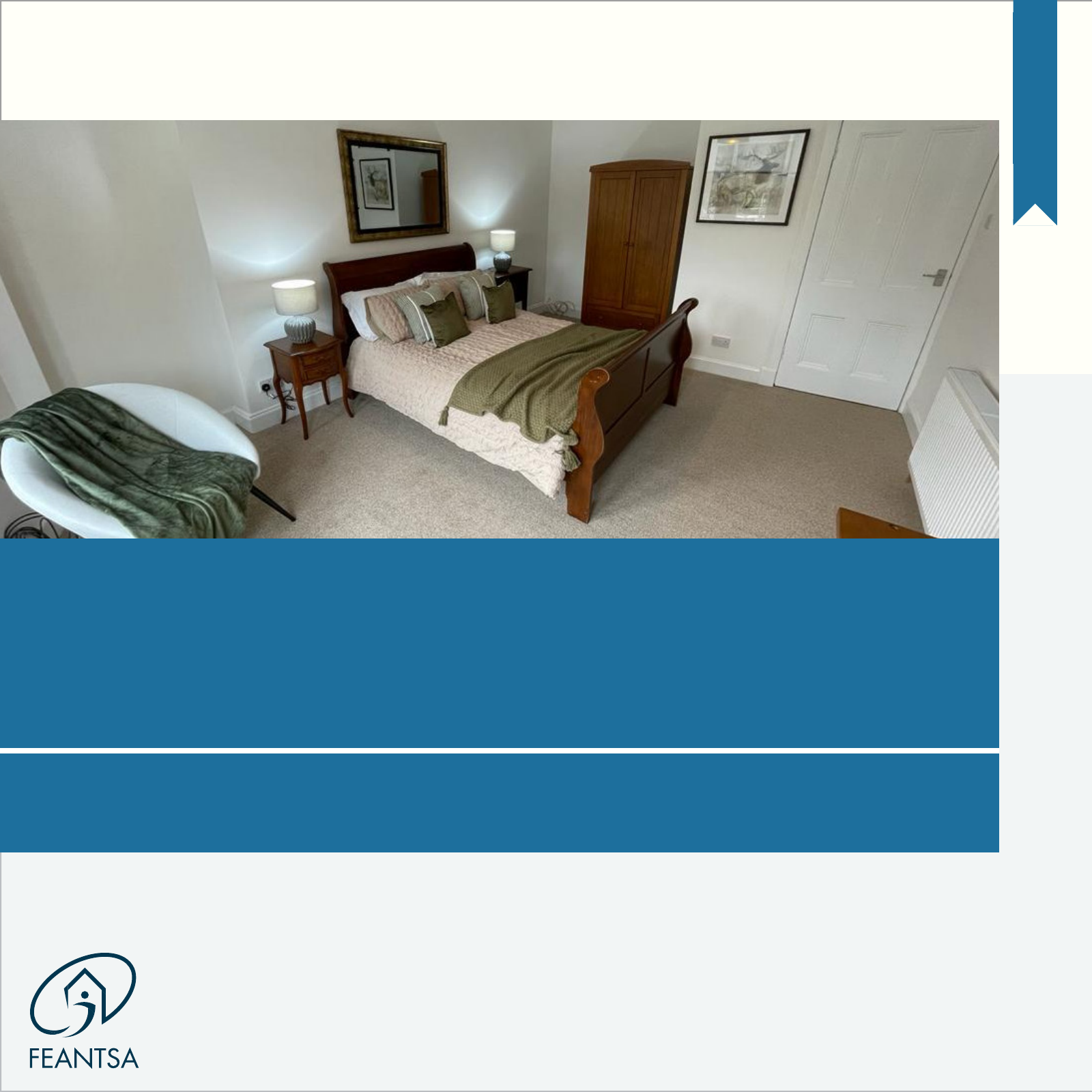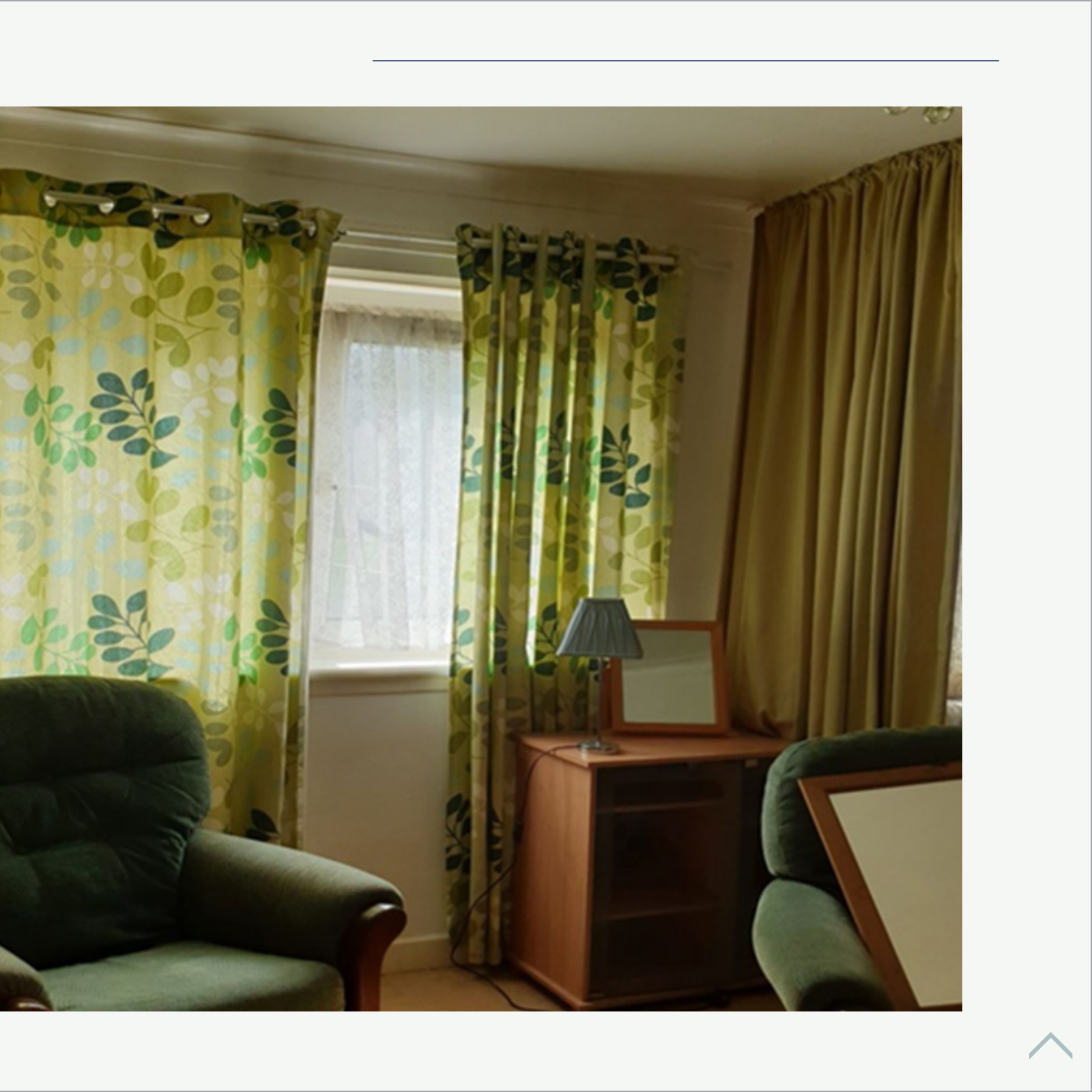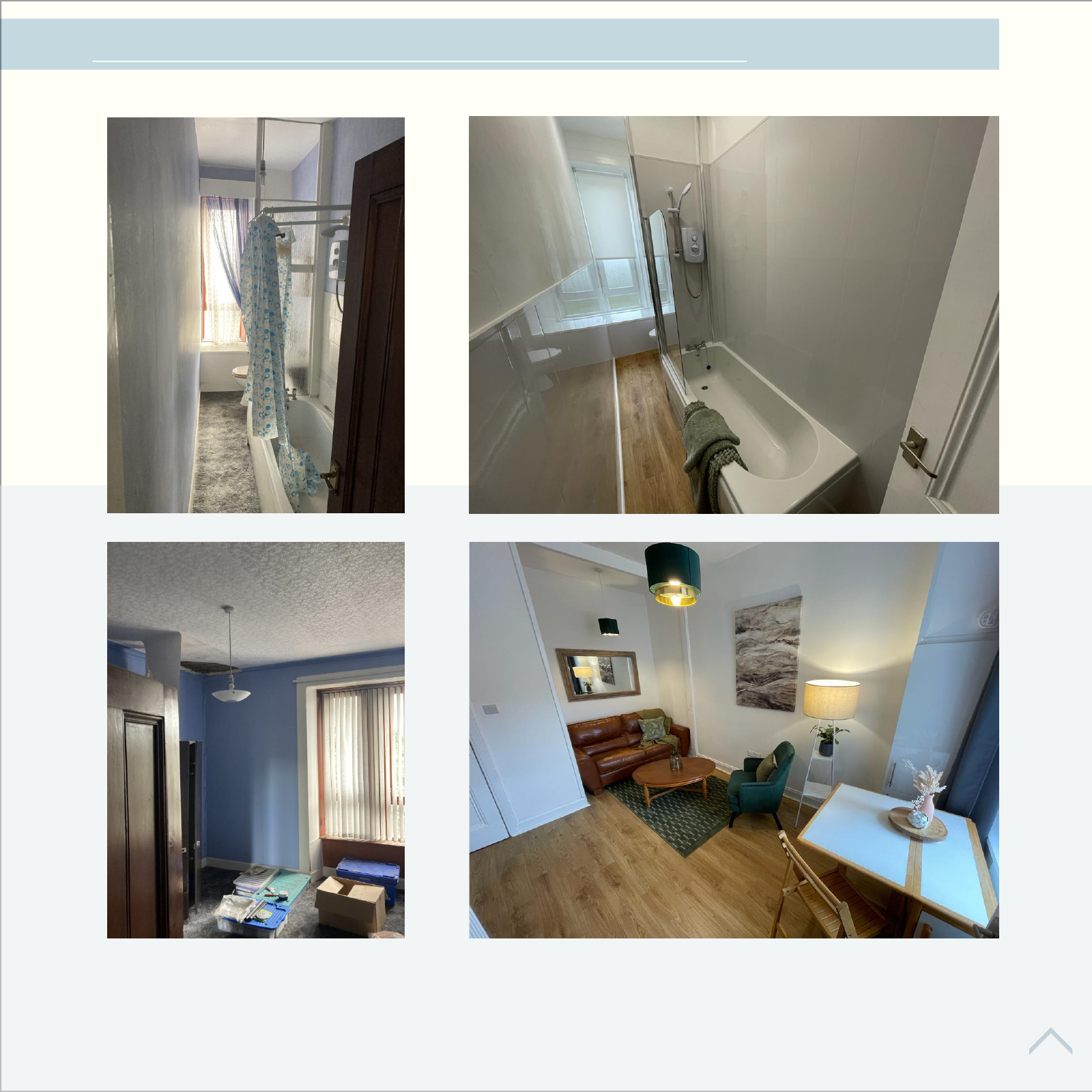
REPORT
European Federation of National Organisations Working with the Homeless
November 2023
UK: Homes for Good
Scotland
Renovating the unt housing stock: Case Study #1

CASE STUDY
United Kingdom: Homes For Good Scotland
2
Written by:
Joey Lawrie, Homes For Good (Scotland),
Tenancy Support and Partnerships
Edited by
Anna Bajomi, FEANTSA Policy Ofcer
Design by
Bryony Martin, FEANTSA Communications
and Events Ofcer
This booklet is published thanks to the support of the European Climate Foundation

3
CASE STUDY
Renovating the Unt Housing Stock: United Kingdom: Homes For Good Scotland
Contents
1. CONTEXT
Motivation
Source of inspiration
2. PROJECT DESCRIPTION
Target group
Issues addressed by measures
Stakeholders and funding
3. OUTCOMES
Positive outcomes
Innovations and keys to success
Barriers and difficulties
Keys of transferability
Policy recommendations
...5
...6
...6
...8
...9
...10
...11
...12
...12
...12
...12
...13
...13

CASE STUDY
United Kingdom: Homes For Good Scotland
4

5
CASE STUDY
Renovating the Unt Housing Stock: United Kingdom: Homes For Good Scotland
1. Context
Homes for Good (Scotland) CIC (Commu-
nity Interest Company) was created in March
2013 as the rst Scottish social enterprise
letting agent within the private rented sector.
Based in Glasgow, Homes for Good (HFG)
manages homes within the City of Glasgow and
surrounding local authority areas in the West of
Scotland.
Scotland has a population of approximately 5.4
million living in 2.5 million households. In 2022/23
approximately 39,000 people presented as
homeless. There are 350,000 private rented
sector households (14%) with 31% them reliant
on government support to pay rent, and 245,000
households are on social housing waiting lists.
Due to the shortage of social housing, people
who are homeless or who are on low incomes/
government benets often rely on renting at the
lower end of the private rented sector as their
only option. Historically, if they have been able
to access a Private Rented Sector (PRS) prop-
erty at all (many landlords will not offer homes
to people on benets) these properties were
typically in poor physical condition, often with
equally poor management practices by land-
lords and letting agents.
Creating access to quality at the lower end of the
PRS for people with limited choice and who are

CASE STUDY
United Kingdom: Homes For Good Scotland
6
homeless was the challenge HFG has chosen
to tackle. The challenge is even greater today,
with rents having risen to a level far exceeding
government benet allowances, increased
competition, the demand for homes from the
growing student population, and a growing
asylum seeker/migrant population.
Motivation
HFG has responded to this challenge through
the creation of a portfolio of affordable, quality
homes for people with limited housing choice.
Source of Inspiration
HFG founder Susan Aktemel, piloted
this approach of buying lower value proper-
ties, designing and furnishing them, and then
supporting people on lower incomes to live in
them through her previous work in the social
sector, and by creating a small portfolio of homes
within her family business. A combination of her
frustration with quality within the private rented
sector based on her own experience, and her
determination to raise investment to build a
portfolio at scale has enabled HFG to achieve
what it has to date.
“Our investment portfolio
aims to address the issue
of empty and unt prop-
erties and transform them
into beautiful aordable
homes.”

7
CASE STUDY
Renovating the Unt Housing Stock: United Kingdom: Homes For Good Scotland
Before and after pictures of a recent renovation by Homes for Good Scotland

CASE STUDY
United Kingdom: Homes For Good Scotland
8
2. Project Description
Firstly, we identify and buy empty and dilap-
idated homes both on the open market, at
auctions, and through private referrals, and
revitalise them within three months through our
renovations team and builders. We also buy
properties from landlords who already have
tenants in their homes, and we improve their
living conditions and quality of life.
Our funding model is based on buying properties
at the lower end of the market, to ensure we can
set affordable rent once costs of renovation and
furnishings are considered. We try to purchase
multiple ats within the same building, to enable
us to take the lead in improving common areas
and, in turn, improve the living conditions of
other residents.
Our renovation work includes energy ef-
ciency improvements such as heating, window
upgrades, and insulation. We also replace
ooring, electrics, kitchens, and bathrooms as
required – every property is different. Where we
can we convert one bed into two bed proper-
ties, creating more space for larger households.
Once the renovation work is completed, our
interior design team fully furnishes the space,
transforming it into a home someone will love
at rst sight. This furnishing goes far beyond
basic appliances and furnishings, and includes

9
CASE STUDY
Renovating the Unt Housing Stock: United Kingdom: Homes For Good Scotland
bedding, cushions, curtains, decorative orna-
ments, and pictures. The warm, cosy, and
welcoming feeling of a fully furnished property
ready for a new long-term resident is our rst
goal. We then continue to manage the property
and tenants with a person-centred tenancy
support.
Target Group
HFG advertises its properties on the open
market, accessible to anyone that is looking
for a long-term home. Lower rent levels attract
people on lower income and in receipt of bene-
ts. While we get to know our applicants, we
learn to understand their nancial and personal
circumstances which helps us to accommodate
their needs. We also partner with numerous
agencies and stakeholders who specialise in
working with specic groups by offering tempo-
rary accommodation to homeless people and
refugees. At HFG we practise a person-centred
approach and we believe that people have a
choice in selecting a home they love for the right
reason.
“This furnishing goes
beyond basic appli-
cances...the warm, cosy,
and welcoming feeling of
a fully furnished property
ready for a new long-term
resident is our rst goal.”

CASE STUDY
United Kingdom: Homes For Good Scotland
10
Issues Addressed by Measures
Our investment portfolio aims to address the
issue of empty and unt properties and trans-
form them into beautiful affordable homes. Many
owners lack the knowledge and funds to regen-
erate a property to acceptable standards and
therefore these properties can remain empty and
unloved. Turning empty houses into occupied
homes has a positive impact on sustainment
and regeneration of an entire community. Occu-
pied homes are bringing income for the owners,
community, and local authority. This reduces
antisocial behaviour in the area and improves
residents’ sense of belonging. On the other hand,
purchasing and upgrading tenanted property
works is a preventive measure, as residents
get to keep their home at the same costs
while their living conditions and wellbeing are
improved. Good-quality and sustainable homes
should never be a luxury for the few.
“Since 2013 Homes for
Good has raised over £20
million through social
investment, allowing us to
buy and renovate over 340
homes across Glasgow and
the West of Scotland”

11
CASE STUDY
Renovating the Unt Housing Stock: United Kingdom: Homes For Good Scotland
Stakeholders Involved and Funding
Since 2013 HFG has raised over £20 million
through social investment, allowing us to buy and
renovate over 340 homes across Glasgow and
the West of Scotland. Social or impact investment
is a type of loan provided by specialist funders
to charities and social enterprises who make a
tangible positive difference in people’s lives. Our
investors include The Charity Bank/Big Society
Capital, Social and Sustainable Capital and
Big Issue Invest. Our business model, based on
lower purchase and renovation costs, allows us
to rent properties quickly at an affordable rent
and provide an acceptable rate of return for our
investors. In 2021 we joined forces with Shelter
Scotland and the Scottish Empty Homes Part-
nership (SEHP) funded by the Scottish Govern-
ment, which aims to encourage private sector
empty properties back into use. With this venture
we are aiming to revive at least 30 empty prop-
erties by either making a purchase or providing
advice and support to an owner who is planning
to rent.

CASE STUDY
United Kingdom: Homes For Good Scotland
12
3. Outcomes
Positive Outcomes
A controlled purchase and renovation strategy
allows us to offer affordable rents to people
on lower incomes. The improved condition of
our properties increases their value, which in
turn strengthens Homes for Good’s nancial
security and creates a long-term asset base.
Bringing empty homes to life and regenerating
communities has a wider social impact on
future generations of deprived areas. Merging
the gap between social and private markets by
creating high standards of homes at affordable
prices has a direct impact in reduction of home-
lessness. HFG’s approach allows freedom
of choice; people do not have to be stuck on
waiting lists until a property becomes avail-
able, and then take it, all the while hoping to
have enough money available to make the at
habitable. With HFG, people have a choice.
The emphasis on the quality and detail of the
properties alongside our friendly approach
has a direct impact on our tenants, with over
70% reporting a signicant improvement of
physical and emotional wellbeing within the
rst three months of becoming a HFG t e n a n t .
Innovation and Key Success Factors
The rst step, after developing the concept, was

13
CASE STUDY
Renovating the Unt Housing Stock: United Kingdom: Homes For Good Scotland
to learn the language of investors and secure
the funding required to deliver the vision. The
rest was relatively simple: nd the right proper-
ties at the right price, keep within budgets, and
surround yourself with a hard-working, like-
minded team. Managing our own investment
portfolio and generating operating income from
rents makes our letting-agency model self-sus-
tainable. Understanding our tenants’ needs
and working around it with a person-centred
support provides longevity and satisfaction.
Barriers and Diculties
Securing social investment and nding the right
at at the right price has become increasingly
challenging and takes time. Refurbishing homes
in 90 days with a small team brings its own
barriers and sourcing external help can push
expenditure over budget. In the current climate,
higher interest rates and house prices are chal-
lenges that call for the reassessment of our
business model. While working with vulnerable
people on low incomes, we must allow for risks
of tenancy failure and associated operational
c o s t s . O u r t e n a n c y s u p p o r t a p p r o a c h i s a p r e v e n -
tive measure, aimed to resolve these challenges
“Empty homes and energy
eciency grants alongside
investment would make
enable high quality homes
at aordable rents.”

CASE STUDY
United Kingdom: Homes For Good Scotland
14
and sustain tenancies long term. Cost of living
pressures for our tenants have a direct impact
on arrears and property conditions. Taking over
tenanted properties brings challenges related to
building trusted relationships with people who
have been previously let down by their land-
lord in the past; but persistence, kindness, and
honesty go a long way to repairing these rela-
tionships.
Keys of Transferability
Rather than focusing on a big new develop-
ment and investments, looking into recycling
existing homes that are unused, thus making
a positive impact on the environment, commu-
nities, and housing, is an option which can
apply anywhere in the world. No matter how
small the percentage of empty homes is in the
area, the opportunity for regeneration is a far
more cost effective and valuable approach in
preventing homelessness than building “from
scratch”. Private sector providers should work
on breaking the stigma of “low-income” fami-
lies being bad tenants. People on social bene-
ts are at a lower risk of not paying rent than
people in employment who may lose their job
suddenly.
Policy Recommendations
◀ Low interest rate capital is essential to
make this model work for people most in
need of homes;
◀ Relaxation of planning processes - speed
and criteria - would increase development

15
CASE STUDY
Renovating the Unt Housing Stock: United Kingdom: Homes For Good Scotland
opportunities to create more homes.
◀ Empty homes and energy efciency
grants alongside investment would
make enable high quality homes at
affordable rents.
◀ Tax incentives for owners and land-
lords who offer properties to people
at lower than market rents.

